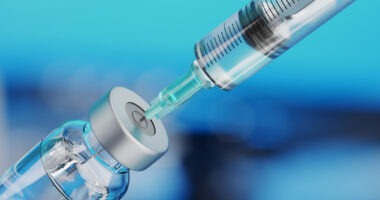The CDMO/CMO Report: The Market For High-Potency Manufacturing
Strong growth in the global oncology market continues to drive growth for high-potency manufacturing and opportunities for CDMOs/CMOs providing this specialized manufacturing. What do the market numbers show now and in the near term?
Oncology drugs: a major growth driver
Oncology drugs, the largest therapeutic sector globally and in the US, continues to be a major driver of growth for high-potency manufacturing, both for commercial products and drugs in development. Biologics and newer approaches, such as immunotherapies, constitute the oncology-drug market, but small molecules, including cytotoxics, and hybrid approaches, such as antibody-drug conjugates (ADCs), which consists of a monoclonal antibody linked to a cytotoxic small molecule, are also part of the market and represent opportunities for CDMOs/CMOs providing high-potency manufacturing.
Overall, on a global basis, spending on cancer medicines rose to $196 billion globally in 2022, growing at an average 12% annually over the last five years, according to a recent study, Global Oncology Trends 2023: Outlook to 2027, by the IQVIA Institute for Human Data Science. The growth in major markets is driven by new products and brand volume, and offset by losses of exclusivity, including biosimilar impact. Spending on oncology medicines is expected to reach $375 billion by 2027, according to the IQVIA Institute analysis. The US spending on oncology medicines has risen from $58 billion. in 2018 to $88 billion in 2022 representing 45% of global spending. Growth in the US is expected to increase to the 12-15% range as more than 100 new drugs are anticipated to launch across novel modalities and frequently moving to earlier lines of therapy; increases in spending will be offset by patent expiries for small molecules and biologics, according to the IQVIA Institute’s analysis.
A total of 115 oncology novel active substances (NASs) have launched globally in the past five years and 237 over the last 20 years, with large geographic variations, according to the IQVIA Institute analysis. There were 10 new cancer medicines launched in the US in 2022, and nine were orphan designated. In the US, 53 unique new hematological cancer medicines have been launched since 2013, with 89 to treat solid tumors. In 2022, the European Medicines Agency approved six small molecules and eight biologic new active substances for oncology in 2022, compared to the 10 total approved in 2021, according to the IQVIA analysis. Since 2013, 27% of US oncology new active substances have not launched in Europe, and 2% of Europe launches have not reached the US, according to the IQVIA Institute analysis. In China, 121 new active substances were launched in oncology in the period from 2003 to 2022; 75 of these were launched in the last five years.
The strength of the global oncology market is also evident through the industry’s pipeline. The number of products under development in oncology has grown significantly over the last decade, with more than 2,000 products currently under development, according to the IQVIA Institute study. Global research and development activity in oncology remained at historically high levels in 2022, up 22% from 2018, and the global number of patients treated with approved medicines increased at an average of 5% annually over the same period, according to the IQVIA Institute study. In addition, oncology clinical trial starts remained at historically high levels in 2022, up 22% from 2018 and primarily focused on rare cancers. Oncology development is focused on solid tumors, with next-generation biotherapeutics growing across all cancers. Among the various classes of oncology drugs, clinical trials started for PD-1/PD-L1 inhibitors grew 54% over the last five years, accounting for 81% of ongoing single-country late-stage trials. ADCs are also emerging with significant efficacy across a broad range of targets, with varying commercial success, according to the IQVIA analysis.
ADCs draw interest from Big Pharma
A recent and high-profile deal in the ADC market is Merck & Co.’s and Daiichi Sankyo’s $22-billion ADC pact. Last month (October 2023), the companies entered into a global development and commercialization agreement for three of Daiichi Sankyo’s DXd ADC candidates: patritumab deruxtecan (HER3-DXd), ifinatamab deruxtecan (I-DXd) and raludotatug deruxtecan (R-DXd), in a deal worth up to $22 billion ($4 billion upfront, $1.5 billion in continuation payments, and $16.5 billion in milestone payments). The companies will jointly develop and potentially commercialize these ADC candidates worldwide, except in Japan where Daiichi Sankyo will maintain exclusive rights. Daiichi Sankyo will be solely responsible for manufacturing and supply.
ll three potentially first-in-class DXd ADCs are in various stages of clinical development for the treatment of multiple solid tumors both as monotherapy and/or in combination with other treatments. Patritumab deruxtecan was granted Breakthrough Therapy Designation by the US Food and Drug Administration in December 2021 for the treatment of patients with EGFR-mutated locally advanced or metastatic non-small cell lung cancer (NSCLC) with disease progression on or after treatment with a third-generation tyrosine kinase inhibitor (TKI) and platinum-based therapies. The submission of a biologics license application (BLA) in the US is planned by the end of March 2024 for patritumab deruxtecan.Ifinatamab deruxtecan is currently being evaluated as monotherapy in a Phase II clinical trial in patients with previously treated extensive-stage small cell lung cancer (SCLC). Raludotatug deruxtecan is currently being evaluated in a first-in-human Phase II clinical trial.
Designed using Daiichi Sankyo’s proprietary DXd ADC technology to target and deliver a cytotoxic payload inside cancer cells that express a specific cell surface antigen, each ADC consists of a monoclonal antibody attached to a number of topoisomerase I inhibitor payloads (an exatecan derivative, DXd) via tetrapeptide-based cleavable linkers. In aggregate, the three programs have multi-billion dollar worldwide commercial revenue potential for each company approaching the mid-2030s, according to Merck & Co., which outlined the deal in an October 18, 2023, press announcement.
Under the terms of the pact, Merck will pay Daiichi Sankyo upfront payments of $1.5 billion for ifinatamab deruxtecan due upon execution; $1.5 billion for patritumab deruxtecan, where $750 million is due upon execution and $750 million is due after 12 months; and $1.5 billion for raludotatug deruxtecan, where $750 million is due upon execution and $750 million is due after 24 months. Merck also will pay Daiichi Sankyo up to an additional $5.5 billion for each DXd ADC contingent upon the achievement of certain sales milestones. When combined with the additional refundable upfront payment of $1 billion, total potential consideration across the three programs is up to $22 billion.
In addition, Merck may opt out of the collaboration for patritumab deruxtecan and raludotatug deruxtecan and elect not to pay the two continuation payments of $750 million each that are due after 12 months and 24 months, respectively. If Merck opts out of patritumab deruxtecan and/or raludotatug deruxtecan, the upfront payments already paid will be retained by Daiichi Sankyo and rights related to such DXd ADCs will be returned to Daiichi Sankyo. Merck will pay an additional upfront payment of $1 billion ($500 million each for patritumab deruxtecan and ifinatamab deruxtecan), a pro-rated portion of which may be refundable in the event of early termination of development with respect to each program. For raludotatug deruxtecan, Merck will be responsible for 75% of the first $2 billion of R&D expenses. Except with respect to R&D expenses, the companies will equally share expenses as well as profits worldwide, except for Japan where Daiichi Sankyo retains exclusive rights and Merck receives a royalty based on sales revenue.
Emerging bio/pharma companies: key customer base for CDMOs/CMOs
While the Merck–Daichi Sankyo deal is an example of a Big Pharma play in ADCs, in general, emerging biopharma companies are leading innovation in the oncology market. Emerging bio/pharma companies, defined as those with less than $500 million in annual sales and R&D spending less than $200 million per year, originated 70% of new US oncology drugs in 2022 and launched 71% of their own products, according to the IQVIA analysis. Emerging biopharma companies were also responsible for 71% of the oncology pipeline in 2022, up from 45% a decade ago.
In comparison, large pharma companies, those with greater than $10 billion in annual sales, have seen a declining share of the oncology pipeline, responsible for 21% of products currently under development, down from 36% in 2017. Since 2020, overall oncology pipeline growth has slowed growing just 5% over the last two years, but with 15% growth in the Emerging Bio/Pharma pipeline compared to a 13% decline across larger companies. Of the emerging biopharma companies working in oncology, 77% are solely focused on oncology drug research and development and of those focused solely on oncology, 72% are only developing a single drug, according to the IQVIA Institute study.





